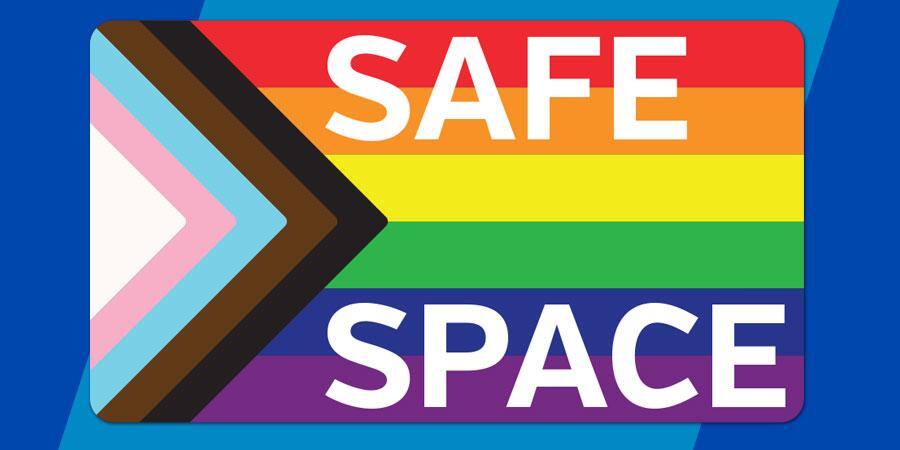As we celebrate Pride Month, now is a good time to understand what a safe space is — and how each of us can play a role in helping create and maintain these spaces.
As hate crimes against LGBTQ people — and anti-LGBTQ legislation — continue to increase, the need for safe spaces becomes more crucial. They play a pivotal role in affirming LGBTQ community members and enabling them to thrive and feel safe.
What is a Safe Space?
A safe space, as defined by the Merriam-Webster Dictionary, is “a place intended to be free of bias, conflict, criticism, or potentially threatening actions, ideas, or conversations.”
Within the LGBTQ community, the term safe space can be traced back to the 1960s, during which gay and lesbian bars were places where LGBTQ people could gather and be safe from attacks.
It is important to note that safe spaces can also be conceptual, not just physical. They should provide an emotionally safe environment for people or groups where they can freely express themselves — without fear of prejudice or judgment.
How to Create Safe Spaces for LGBTQ People
Common ways that businesses and organizations create safe spaces for the LGBTQ community include implementing non-discrimination/inclusion policies, provide all-gender bathrooms, and display safe space signs or stickers.
Wondering how you can directly create safe spaces for LGBTQ people? Here are a few ideas.
- Use the right language. One of the best ways to make LGBTQ people feel safer and more comfortable is by using inclusive language. Avoid using umbrella terms and use specific terminology that represents how they identify. When in doubt, ask! Most people are happy to share their preferences.
- Maintain confidentiality. It’s important to keep any information someone shares with you confidential. It can be very difficult for a LGBTQ person to confide in someone about their identity. You don’t want to share that info with someone else and potentially “out” them. By maintaining confidentiality, it shows support for that person and helps build trust, allowing them to feel safe.
- Celebrate unity. The goal for all of us is to help create an inclusive community that is accepting of everyone. Sometimes, when we try to be inclusive and create safe spaces for the LGBTQ community, we draw attention more to our differences. So, it’s important to recognize the common humanity that unites us and celebrate individual achievements.
- Admit to and own mistakes. It’s OK to make mistakes. Apologizing for them and asking how you can avoid making them again can go a long way in helping LGBTQ people feel welcome. This shows you are committed to learning how to support their community better.
Why We Need to Create More Safe Spaces
As of May 2023, the American Civil Liberties Union (ACLU) was tracking nearly 500 anti-LGBTQ bills in the United States. This underscores the growing importance of safe spaces for LGBTQ community members as they face increased hostility and attacks worldwide.
The good news is that an increasing number of businesses and organizations are stepping up their efforts to be more inclusive. Together, on a collective and individual basis, we can help create more environments where LGBTQ people can feel comfortable and thrive.
